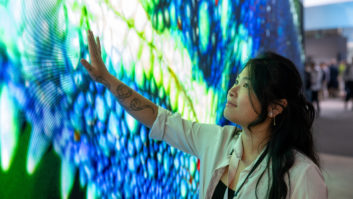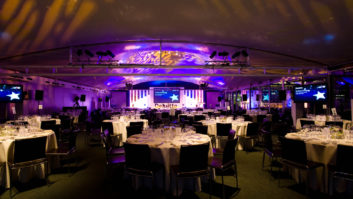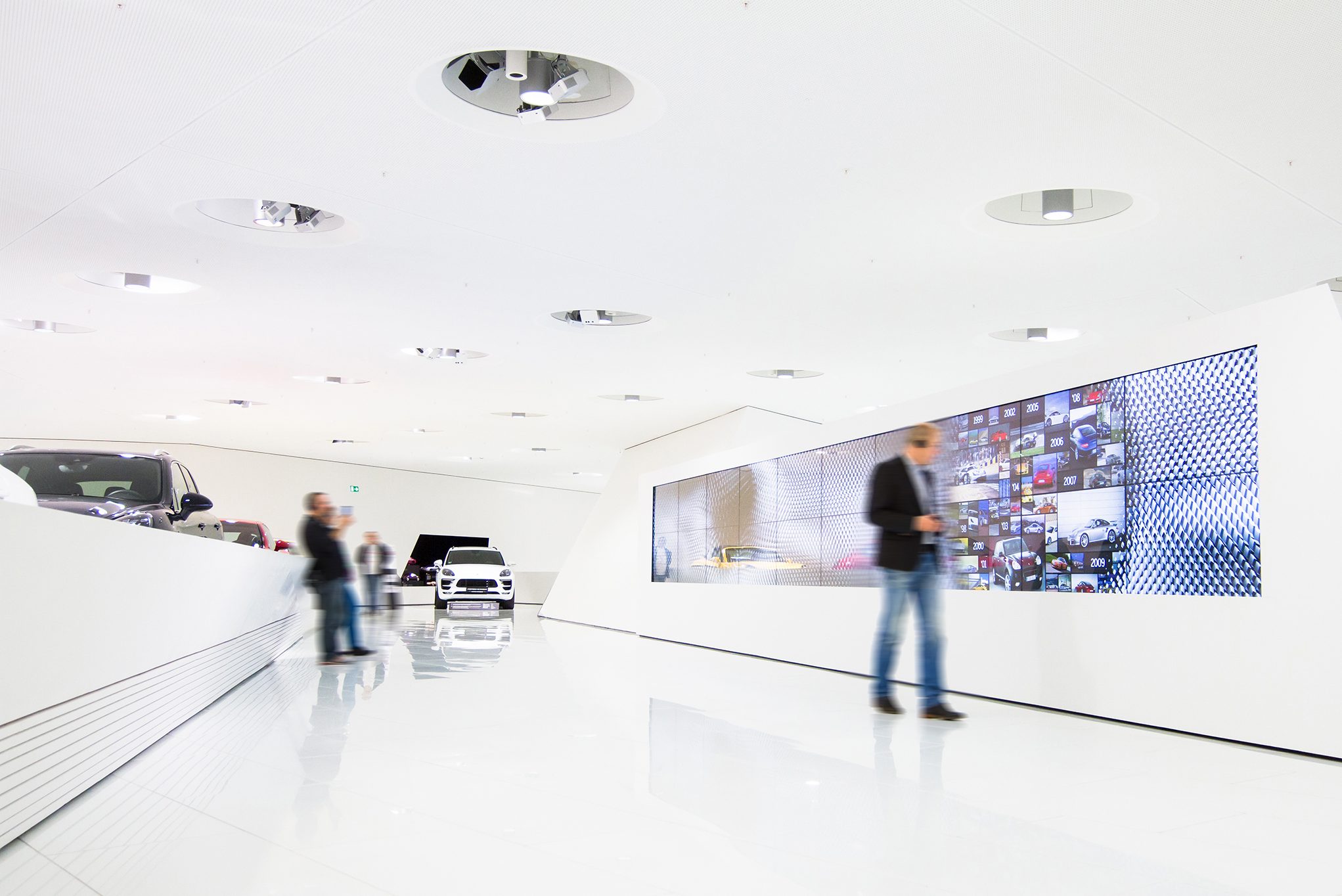
The Porsche Museum in Stuttgart has added two new media technology installations to its permanent exhibition, including a 16sqm video touchwall and interactive audio installation.
As with the original media technology at the museum, macom, the Stuttgart-based AV and engineering consultancy, was called in to manage the planning and design of the project and take care of RFPs and construction supervision.
Since 2007 the museum has showcased more than 80 vehicles and countless small exhibits providing a comprehensive overview of the Porsche brand past and present. After seven years of operation, the decision was made to expand media technology, adding value to the final stages of the exhibition.
The focal point of the new installations is the Porsche touchwall, a 12m-wide video screen with a resolution of 41 megapixels. The wall allows visitors to swipe through over 3,000 photos, illustrations, posters, and advertising campaigns, going back as far as 1931. The installation is linked directly to a database which houses the Porsche archives, which means new content is automatically imported and displayed every day.
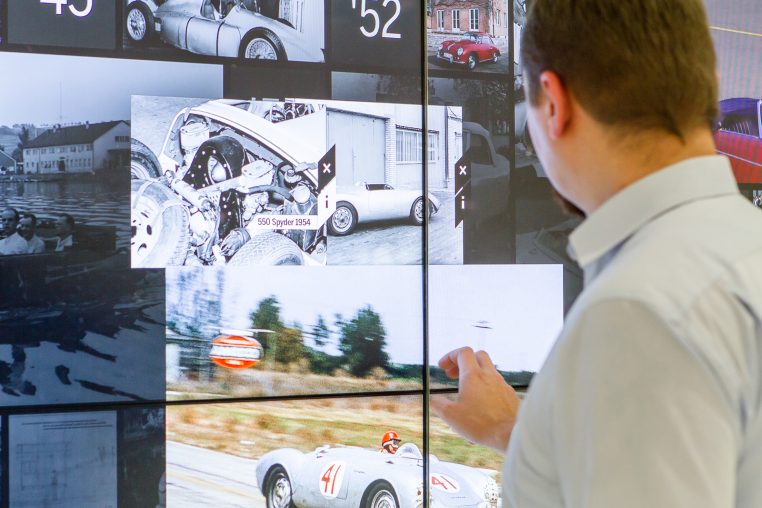
The touchwall works by using a tracking system to respond to visitors’ movements based on cameras and a touch overlay. When visitors walk past the touchwall, the sensors pick up their image and a virtual curtain comes up giving access to the world of Porsche images. To navigate their way through the images, visitors use a touch frame, which offers various parallel options for swiping through content by making multi-touch hand movements. The setup encompasses 20 full HD LCDs, each measuring 55in, controlled by five graphics PCs using 3D real-time software.
The other highlight at the museum is an interactive sound installation called Porsche in the Mix. This installation allows visitors to pick from seven possible car models on a touchscreen, with the selected car shown on a 9sqm LED display, which then plays the distinctive sound of its engine.
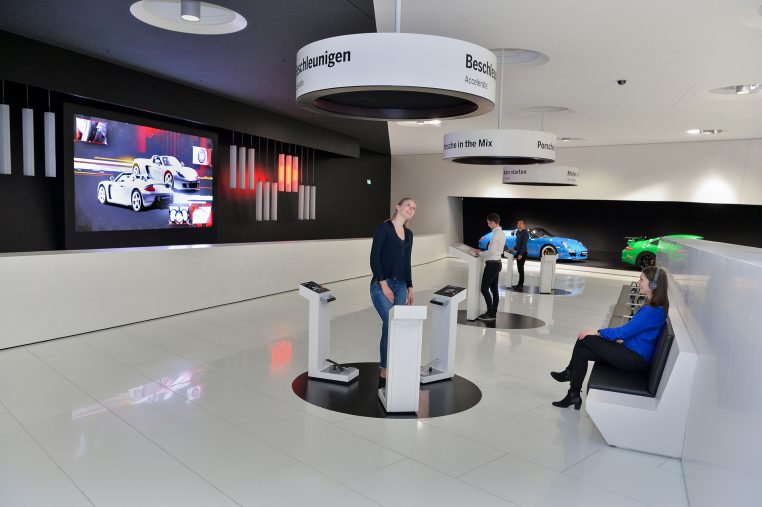
Visitors can use the touchscreen to select up to eight sounds from a car, ranging from indicators clicking to doors closing, and these can be integrated into the musical backing with the sound of the engine. All sound bites are based on original Porsche vehicle noises and they can also be illustrated on the LED video wall with movie clips and kinetic animations. The installation has 12 LED sound level indicators hovering in the air to the right and left of the video screen and these move up and down depending on the actual vehicle noise and the volume. Once they have finished, visitors can send their self-composed music track to themselves via email.
The concept behind the multimedia installation was developed by the customer experience agency Liganova from Stuttgart. The project was closely coordinated between macom, the agency, and Porsche to ensure that the concept was realised not only within schedule but also within budget.
Andreas Hofmann, Porsche Museum project manager, explained: “The architecture at the Porsche Museum isn’t exactly simple so it was a pretty challenging job getting the construction part of the project right. The museum managers also wanted as little disruption to everyday operations as possible during installation.
“New media technology is not considered abstract or something beyond the human body. The big Porsche touchwall is a good example of an oversized media display that does nothing to intrude or impose itself on visitors.”
Another aim with the new installation is to make using the media technology more efficient and more reliable. To do this, macom already ensured that the RFPs covered system revisions, so they can cope with updates without affecting technical stability. To make the units simple to operate, there’s a control room directly behind the touchwall. Operators can control both installations using an iPad. A signal transmission protocol was included in the installation using an HDBaseT cable and the setup is modular to also allow for system extensions as required. As a result, all installations can be upgraded to match future developments.






